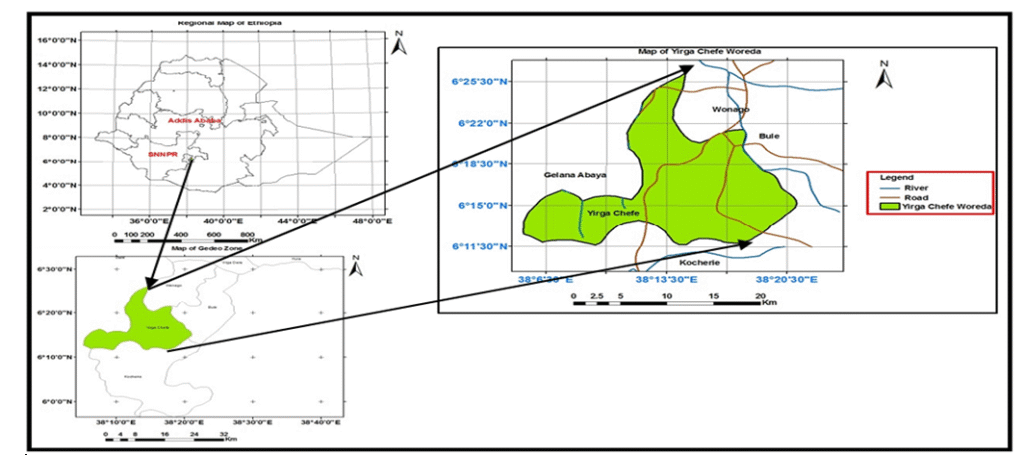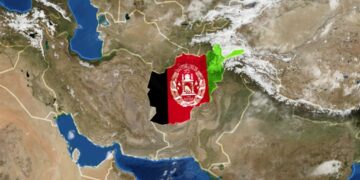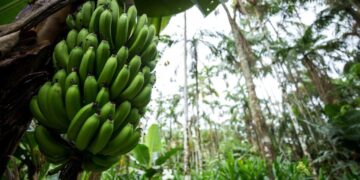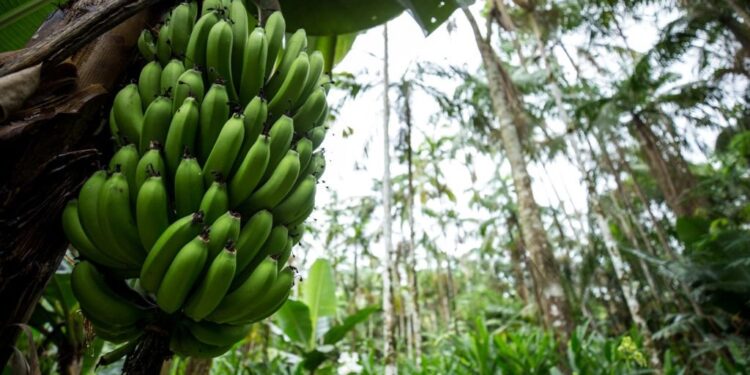Israel P. Menbere1
1Department of Biology, College of Natural and Computational Sciences, Dilla University, Dilla, Ethiopia
*Corresponding Author Email: isrepete@yahoo.com
Highlights
- Study assessed community perceptions of agroforestry benefits and management in Yirgacheffe District, Ethiopia.
- Economic, medicinal, and environmental values were identified as key agroecosystem benefits.
- Major challenges included population growth, limited economic gains, and environmental degradation.
- Communities preferred collaborative management with local leaders and promotion of traditional knowledge.
Abstract
The present study was conducted to determine the community perception towards agroforestry ecosystem benefits and management practices in Yirgacheffe District, in South Ethiopia. The study aimed to distinguish the values of the agroecosystem, identify the challenges affecting the sustainability of the agroecosystem and evaluate the preferred environmental protection strategies by the communities. Fifteen kebeles where natural forest and wildlife habitat protection problems occurred, and the incidence of human-wildlife conflict reported were purposefully selected to undertake this study. From these kebeles, a total of 248 sample households (Aricha: 15, Domarsso: 20, Adame: 20, Sade: 16, Elatencha: 15, Konga: 15, Udessa: 18, Rasit: 17, Harru: 18, Gerse: 16, Orubetela: 17, Worab: 16, Aramo: 15, Tulse: 15 and Wote: 15) were selected using stratified purposive sampling. Extent of natural forests and wildlife habitats, production of different crop types and livelihood patterns were considered during the allocation of sample sizes in each kebele. Moreover, key informants comprising experts and professionals from district government offices (coffee development, forestry and natural resources) and teachers were included in this study. Primary data were collected through semi-structured questionnaires, semi-structured interviews and focused group discussions. Descriptive statistics and narrations were used to analyze the data. The findings of the study on the agroforestry ecosystem values indicated economic benefit (food, raw material, etc) as the major value followed by medicinal and environmental benefits. Concerning the challenges affecting the sustainability of the agroforestry ecosystem, population growth, inadequate economic benefits and environmental destruction were the major ones. The perception evaluation of agroecosystem protection and management methods by communities indicated the preference for collaborating with local leaders and local governing bodies in the management of agroecosystems. In addition, it was also known that communities preferred enhancement of traditional knowledge used by local communities and promotion of local governance system in the management and protection of agroecosystems. This study indicates that perception towards agroforestry ecosystem protection and its management is mainly shaped by its economic and social values, and collaborative management practices between communities and local government bodies.
Keywords: Community perception, agroforestry ecosystem, benefits, management practice.
1. Introduction
Environment including natural and human dominated ecosystems contributes to meeting the sustainable development goals of nations. The Kruger National Park of south Africa for instance supported the socio-economic development of host communities, played a key role in tackling climate change and contributed to address addresses SDG16, on peace and justice by negotiating host communities with park (Mabibibi, et al., 2021). Similarly, human dominated agroecosystems contribute to the development of communities in different ways. They minimize poverty, enhance biodiversity, reduce land degradation, reduce soil erosion, contribute to water availability and quality (Jose, 2009). In addition, they help diversification of production systems, maintain production levels during both wetter and drier years and enhance additional income streams, and leads to sustainability (Montagnini and Nair 2004; Verchot et al. 2007).
The livelihoods of rural communities in many developing countries are linked to forest and natural resources (Tsegaye, 2023). The need for forest and natural resources is increasing in developing countries, but the supply has been limited due to the diminishing availability the resources (Hamza and Iyela, 2012). Agroforestry is a land use practice involving an integrated approach to growing crops and conserve remnant natural trees and ecosystems. All forms of agroforestry ecosystems comprise components of trees that could be the remnants of the natural stand or could be plantations and crops that help communities to produce food, fiber, fodder, and fuel from the same unit of land (Bishaw and Abdelkadir, 2003; Estifanos, 2018). Agroforestry ecosystems are crucial in climate adaptation, livelihood improvement, energy source, environmental protection and sustainable development (Alemu, 2016; Bekele, 2019; Manaye et al., 2021; Tsegaye, 2023). Agroforestry ecosystems attract the attention of conservationists due to the linkage among agroforestry ecosystems, wildlife conservation and human benefits (Nyhus and Tilson, 2004).
The adoption, practice and management of agroforestry practices is affected by the perception of households in the communities (Bekele et al., 2023). Prior behaviors, experiences, observations and aspirations are important in shaping farmer perceptions. Individual and household characteristics, institutions, socioeconomic conditions and environmental conditions are important in the utilization and practice of agroforestry systems (Jha, et al., 2019). As utilization of agroforestry practices is critical for the farm community to improve their economic, social, and environmental benefits, farmers with sufficient knowledge on agroforestry practice and management activities agree to adopt and practice agroforestry systems (Tega and Bojago, 2023).
Agroforestry ecosystems are important components for majority of smallholding livelihoods in various parts of Ethiopia (Estifanos, 2018). One of these is, the Gedeo agroforestry ecosystem that supports the livelihood of rural communities and possesses remnant natural forests and bushes of high floristic composition and serve as a habitat for different wild animal species. It has also been inscribed under UNESCO world heritage site list. However, the Gedeo agroecosystem is facing challenges such as deforestation, loss of wildlife habitat, settlement expansion, intensive farming, etc that affect the sustainability of the agroecosystems (Bishaw and Abdelkadir, 2003; Marua et al., 2023). As a part of the Gedeo Agroforestry ecosystem, Yirgachefe District entertains increasing habitat loss and environmental degradation, and associated problems that affect sustainability of the agroforestry ecosystem (Agriculture and natural resource conservation office of Yirgacheffe District, 2022). To identify the root causes of challenges in agroforestry practice and management and sustainability, evaluating the perception of local community was found important (Tega and Bojago, 2023). In addition, no previous study was conducted on the perception of agroforestry benefits and management practices in the area (Agriculture and natural resource conservation office of Yirgacheffe District, 2022). Hence, the objectives of this study were to: (i) determine the values of the agroecosystem; (ii) identify the challenges affecting the sustainability of the agroecosystem; (iii) evaluate the preferred environmental protection strategies by communities. This helps to develop and enforce sustainable conservation models in the agroforestry ecosystem.
2. Methodology
2.1 Description of Study Area
The study was conducted in Yirgacheffe District (Figure 1). While Kebeles are the lowest administrative units, districts (Woredas of Ethiopia) are the second lowest administrative units in the current Ethiopian context and are bigger comprising many kebeles. Yirgachefe is one of the Districts in Gedeo Zone, in Southern Ethiopia Regional state. It is located at 400 kms away from Addis Ababa, the capital of Ethiopia. Located between 6°09ʹ and 6°32ʹ N and 38°08ʹ and 38°32 E, it is part of the eastern escarpment of the Rift Valley System of Ethiopia with altitudinal range of 1501–2500 masl (Negash, 2007). The 2007 National census report indicated that the total population of Yirgacheffe Districts was 195,256 (Central Statistics Agency, 2007). Around 87% of the total population is living in rural areas depending on crop production and livestock rearing, and the rest 13% are dwellers in the urban part of the district (Dilebo, 2019). Yirgachefe District is characterized by humid tropical climate. The annual rainfall of the area ranges between 1500-1700 mm. The rainfall pattern in the area is bimodal with short rain season from March to June and with long rain season from August to October (SNNPRBoARD, 2007).

Figure 1: Map of the study area (Source: Ayele et al., 2014).
2.2 Agroforestry and Its Benefits
Agroforestry is a traditional land use system in which humans, trees and crops coexist together. This enhances the ecological and livelihood values of agroecosystems (Debelo, et al., 2017). The agroforestry system supports densely populated communities through livelihood options, economic benefits, and contribute for environmental values (Gebrehiwot, 2013; Mellisse et al., 2017).
2.3 Challenges of Agroforestry Ecosystems
Agroforestry systems are being challenged by demographic, economic, technological, and social pressures (Habtamu and Zemede, 2011). The destruction of forests is seen as a cause of environmental degradation, loss of biodiversity, climate change and poverty (Estifanos, 2018).
2.4 Management of Agroforestry Ecosystems
Farmers and farming groups are the most important key actors in the management of agroforestry as they decide about tree management on their land and along with riparian reserves. Likewise, local governments and national and subnational bodies play a role in agroforestry management (Zinngrebe, et al., 2020).
2.5 Agroforestry Structure of Yirgacheffe District
The agroforestry components in the area involve crops such as avocado fruit, enset, coffea arabica, etc and woody species such as Millettia ferruginea, Vernonia amygdaline and Croton macrostachyus, etc (Tesfay et al., 2022). Fruits (i.e. orange, Citrus sinensis; avocado, Persea americana; graviola, Annona muricata) are included in the agroforestry systems and provide different benefits (Reis et al., 2020).
2.6 Sampling Frame
This study was part of the human-wildlife interaction in agroforestry ecosystem in the area. Preliminary study was conducted to know the socioeconomic situations and observe the agroforestry ecosystem contribution in different kebeles of Yirgacheffe District. The preliminary study comprised field observation and discussion with communities and concerned stakeholders for four consecutive weeks during September 2020. Then, stakeholders such as agricultural and natural resource professionals, expertise and community elders were contacted to examine the role of agroforestry ecosystem for community, distinguish appropriate kebeles and respondents from the district. There were 29 kebeles in Yirgacheffe District. Of these, 15 kebeles in which natural forest, wildlife and habitat protection problems occurring and where the incidence of human-wildlife conflict reported were purposefully selected to undertake this study. Of these kebeles, a total of 248 households were selected using a stratified purposive sampling method. The selected kebeles and their respondents were (Aricha: 15, Domarsso: 20, Adame: 20, Sade: 16, Elatencha: 15, Konga: 15, Udessa: 18, Rasit: 17, Harru: 18, Gerse: 16, Orubetela: 17, Worab: 16, Aramo: 15, Tulse: 15 and Wote: 15). During the selection of sample households, extent of natural forests and wildlife habitats, production of different crop types and livelihood patterns were considered to allocate the sample sizes in each kebele. In addition, a total of 27 key informants (20 males and 7 females) were purposely selected based on the recommendation of local leaders, elders, agriculture and natural resource office experts and district administrative bodies. These were Yirgacheffe secondary school staff (8), workers in rural development offices (4), forestry and natural resource conservation experts of the district (6), Coffee and development experts (2), individuals from unions (3) in Yirgacheffe, and development agents in the district (4). Key informants included in the focus group discussion were those who had direct or indirect involvement in the agroforestry system, had leadership roles in the community, experts of agriculture and natural resources and are familiar with agroforestry ecosystem benefits and management challenges. Focus group discussion helps to explore a topic broadly and to identify a situation in short period of time (Trochim, 2003).
2.7 Method of Data Collection
This study was undertaken from September 2020 to May 2022. Different data collection techniques were used to conduct this study. Primary data were collected through provision of semi-structured questionnaires, semi-structured interviews, focus group discussion and observation of the agroforestry ecosystem. While secondary data were obtained from the agriculture, forestry and natural resource offices of Yirgacheffe District. Questionnaires which were translated to local language (Gedeofa) were provided for households in their respective kebeles. Similarly, the interview was held with selected households of the communities and with forestry and natural resource experts of Yirgacheffe District. In addition, two focus group discussions were made with one group composed of 8 individuals (Yirgacheffe secondary school teachers) and with the second group composed of 19 individuals (rural development workers, natural resource conservation experts of Yirgacheffe District, coffee and development experts of Yirgacheffe District, members of unions and development agents) in the district. The two focus group discussions were undertaken for two days each month from March 2021 to December 2021.
2.8 Data Analysis
The quantitative data collected from the questionnaires was analyzed through descriptive statistical methods such as percentage. Microsoft Excel was used to organize and compute analysis. Whereas qualitative data collected through interview and focus group discussion were analyzed in the form of description. Secondary data and document reports from relevant offices of Yirgacheffe District were analyzed qualitatively to substantiate the study.
3. Results
3.1 Socio-Demographic Characteristics of Respondents
Majority of the respondents 188 (75.81%) were males while 60 (24.19%) were females. The ages of respondents were 118 (47.58%) between 35-45, 57 (22.98%) between 18-34, 42 (16.94%) between 45-65 and 31 (12.50%) above 65 years. Majority of respondents, 89 (35.89%) attended primary education and those who attended secondary education were 76 (30.645%). Fifty-three (21.37%) have not attended formal education and only 30(12.10%) respondents attended college and above. The livelihood of the majority of respondents 167 (67.34%) was only agriculture comprising farming of plant food items, livestock rearing and honey production. The second livelihood strategy for respondents was farming and trade 54 (21.77%) followed by farming and personal professional work 16 (6.45%). Farming and government work is the lowest form of livelihood that accounted 11 (4.44%).
3.2 Values of Agroforestry Ecosystem in the District
There are various values of agroforestry ecosystem mentioned by communities in Yirgacheffe District. The communities also support the conservation of ecosystem and biodiversity in the agroforestry ecosystem. Economic benefits of the agroforestry ecosystem such as sources of food, raw materials (i.e. constriction), energy and future tourism was the major value that accounted 102 (41.13%). The second main benefit distinguished was medicinal value 56 (22.58%) followed by environmental value that accounted for 43 (17.34%) (Table 1).
Table 1: Values of agroforestry ecosystem in the study area

As to the respondents, ecosystem and biodiversity resources in the area (Figure 2), provide economic, medicinal, environmental, social and cultural and aesthetic benefits. It helped them to obtain livelihood opportunities, use biodiversity for their health and social benefits, enjoy ecosystem services and beauty of the green environment. Key informants emphasized the role of agroforestry ecosystem in sustainable livelihood options through crop production (i.e. coffee, fruits, enset), material resources for construction (i.e. eucalyptus, by product of enset), source of energy, feed for livestock (i.e. grass) and livestock production, trees for beehives (i.e honey production), etc. Key informants also revealed the common use of plants and animals for medicinal purposes, which is a widely practiced activity in the area. All the key informants explained the role of agroforestry in environmental protection and making the climate conducive. One member of the key informants, an expert of Forestry and natural resource conservation in Yirgacheffe Woreda said “The presence of agroforestry ecosystem and protection of the remnant natural forests in the agroecosystem helps in protecting the environment from landslide and flooding in the areas topography vulnerable to such risk”. As a result, agroforestry system has a role in protecting the environment and providing ecosystem services. In the current study, the communities perceived economic benefits more than environmental and socio-cultural values in the traditionally practiced agroforestry system of Yirgacheffe Woreda. As the agroforestry system of the area is traditional with long-term practice and the production of cash crops (i.e. coffee, Enset, fruits) that afford economic benefits could have affected the perception of the local communities. Although the agroforestry ecosystem of the area has an importance in protecting the environment and meeting the local livelihood and resource needs, this study demonstrated that economic benefits mainly determine the way agroforestry structure is maintained, and its sustainable protection is ensured.

Figure 2: Agroforestry ecosystem features in Yirgacheffe District
3.3 Challenges Affecting the Sustainability of Agroforestry Ecosystem in the Area
Communities in the study area support the protection of agroforestry ecosystem since it provides different values. However, challenges that affect the agroforestry ecosystem protection and its socio-economic benefits were identified in the area. Accordingly, population growth, inadequate economic benefits, environmental destruction due to human demands and increasing changes in the socio-cultural aspects were identified as the major challenges (Table 2). Likewise, the inadequate collaboration between stakeholders and the declining awareness of agroforestry knowledge among the youth group were found to be the challenges to sustainable and effective implementation of agroforestry practice in the area.
Table 2: Challenges affecting the sustainability of agroforestry ecosystem in the area

The discussion with key informants revealed that the trend of human population growth in densely populated areas such as Yirgacheffe district affects agroforestry activity in a great manner. Rapid human population growth affects the efforts to balance economic benefits and environmental protection in areas with limited land and financial resources. Due to the limited economic benefits, an increasing tendency of engaging in livelihood options apart from agroforestry related activities and migration to cities were demonstrated among the youth. The key informants also expounded the presence of growing changes in the socio-cultural aspect of the community. An interviewee in the focus group mentioned “changes in the socio-culture aspects and the limited economic benefits were leading to the declined agroforestry knowledge in the area that reduce environmental protection priority among the youth”. Problem of environmental protection (i.e. increasing human settlement and farm and plantation activity) in the remnant forest areas affects the habitat of the agroforestry ecosystem in the district (personal observation). This study identified challenges of agroforestry such as population and society, economic, land and environment and management and governance related. Of these, population and society and economic related challenges were the major factors that affected the agroforestry system in the district. To address the challenges, diversifying the livelihood options through innovative and non-consumptive ways (i.e. ecotourism), improving market chains for agroforestry products and considering the human population growth in agroforestry practice was found to be fundamental.
3.4 Preferred Ways of Agroecosystem Protection and Management Methods in the Area
Different management mechanisms were revealed by communities to ensure local community benefits and environmental protection in the area. The major one was working with local leaders, collaborating and implementing information provided by the local governing body 98 (39.52%). The second major method responded was enhancing traditional knowledge use of local communities in environmental protection 60 (24.19%). Promoting the local governance system of environmental management was the third method preferred by the respondents 27 (10.89%) (Table 3).
Table 3: Ways of agroecosystem protection and management methods

The response of respondents indicates that the local communities prefer collaboration with local leaders and administrative bodies to enhance the agroforestry ecosystem protection and related economic benefits. This facilitates the creation of beneficial management methods and increases partnership for collaborative work. Joint activities between the local communities and district government bodies in seedling distribution of fruits such as avocado and native trees were being undertaken in the area to promote reforestation and protect the environment (personal observation). The respondents support the use of traditional knowledge and local governance system to promote the agroecosystem protection in the district. This is due to the communities in the district are known for implementing and using traditional knowledge in environmental protection over long years. Members of the focus group discussion such as Yirgacheffe Secondary School teachers, experts of rural development and forestry and natural resources prioritized the use of traditional knowledge and awareness creation to promote the agroecosystem protection and enhance its benefits for the future. This study demonstrated core targets perceived by communities in the protection and management of agroforestry systems, namely governance and management, society related (i.e. traditional knowledge employment and awareness creation) and conservation based (i.e. restoration and stabilization) concepts. The agroforestry system in Yirgachefe district involves actors such as farmers, local government bodies, agricultural unions, research institutes, development agents, etc and the local farmers are playing a key role in the protection and sustainability of the agroforestry system. This result suggests that the major participation of local farmers in the agroforestry system was found to be essential in the sustainability of the agroforestry practice and should be strengthened based on the coordination of local stakeholders and incorporation of traditional knowledge.
4. Discussion
In the study area, the agroforestry ecosystem provides a range of benefits such as economic, medicinal and environmental values. The economic benefits are obtained through food sources, raw materials, timber, current and future tourism, etc. This correlates with the findings of (Shanko et al., 2021), in Belo-Bira Forest, Dawro Zone, in which residents generally appreciated the values of the ecosystem and biodiversity due to its benefits for current and future tourism, environmental and livelihood related values. Due to the integration of trees on farms and agricultural landscapes, agroforestry is a dynamic, ecologically oriented system that provides diverse economic advantages for land users at all levels. In addition, it increases the sustainability of adjacent agriculture and offers a sustainable tree products supply (Tsegaye, 2023). Economic benefits of agroforestry mentioned in different studies. (Phondani et al., 2020), elaborated the benefits of agroforestry practices in the Himalayan state in which communities obtain economic and productive benefits of agroforestry practices through fodder, fuelwood, fibers, timber and food production and that affected their perception towards agroforestry practices. Agroforestry practice found to boost the economic benefit of local and farming communities through production of fuel wood, wood lots, other timber products that influence their perception of the agroforestry practice. Older farmers positively perceive the economic benefits of agroforestry practices due to their intensive experience (Marie et al., 2024).
In the study area, local communities perceived economic benefits of agroforestry more than environmental and socio-cultural benefits. This contradicts with the study of (Nawaz et al., 2016), in which perception of Agroforestry contribution towards land and environmental protection was higher than socioeconomic benefits (Nawaz et al., 2016). Opportunities of economic benefits from agroforestry system enhance the adoption of agroforestry practice and affect the community perception towards its implementation. Economic approaches that generate income for the local community were found to contribute to the adoption of agroforestry activities (Luumi et al., 2016; Farooq et al., 2018). According to (Rahman, 2017), economic sources and resource benefits such as fuelwood, food, timber, etc are the encouraging factors and motivations to engage in agroforestry practices. Income from agroforestry practice helps the community to cope with the financial challenges and meet the resource needs required for living (Mayele and Bongo, 2022). The positive perception of communities towards agroforestry is related to economic benefits and presence of multipurpose and income generating tree species such as fruit trees, woodlots, and annually available plants as risk aversion (i.e. Eucalyptus spp and Cordia Africana) (Agidie et al., 2014).
Medicinal values of agroforestry systems were reported in other studies (Phondani et al., 2020; Sehoubo et al., 2023), in which people use agroforestry in addition to economic benefits. The high role of the agroforestry system in medicinal value in the area might be due to the indigenous knowledge and familiarity of local peoples to medicinal plants and animals in adequate manner. The indigenous knowledge related to the use of medicinal plants and animals is embedded in local people, and mainly with the practitioners (Magige, 2015). In addition, accessibility to medicinal species that can be used in different conditions is also the factor for high communities’ use (Hernandez et al., 2015). The local communities revealed environmental benefits as another major value of the ecosystem. Agroforestry systems support environmental protection though nutrient recycling and soil fertility improvements (Agidie et al., 2014), reducing soil erosion and increasing soil formation (Marie et al., 2024), climate change reservoir of carbon stocks and atmospheric gaseous sinks (Mayele and Bongo, 2022), enhancing the management and conservation of endangered species and conservation of biodiversity through providing connectivity, reducing degradation of habitat crucial for species, etc (Shilabu, 2008). In the study area, agroforestry facilitates environmental protection through enhancing habitat corridors and connectedness for wildlife, serving as a suitable habitat for wildlife species, acting as reservoir of genetic diversity due to the plant and other species, climate change mitigation and carbon stock sink, reducing destruction of habitats, reducing erosion and flooding and landslide, etc. Ecosystem components and biodiversity of agroforestry contribute to environmental benefits such as seed dispersal, soil fertility, environmental cleaning, decomposition, insect pest control, etc. The communities have knowledge of ecosystem and biodiversity role in agroecosystem as they are living together in this human dominated ecosystem. In addition, it has been revealed that biodiversity provides social and cultural and aesthetic values in the area. Biodiversity and ecosystems have important roles in the economic, nutritional, ecological, aesthetic and the socio-cultural aspect of communities (Chardonnet et al., 2002).
Concerning the challenges of agroforestry system, population and society, economic, land and environment and management and governance related problems were identified in the district. This is congruent to the findings of (Weiwei et al., 2014), in which threats originated mainly from common aspects such as policy, population, the market system and land use changes in the traditional agroforestry system. Population growth affects the benefits of community and environmental protection of the area. This in turn will lead to destruction of the agroforestry ecosystem and its practice (Bishaw et al. 2013). Population growth drives increased demand for natural resources including grazing land, resources for fuel, places for settlement and leads to intense farming and other livelihood activities. This has a direct and indirect consequence on the sustainability of the agroecosystem and its economic benefits. The rapidly growing human population in traditional agroforestry system has a negative impact in increasing agricultural activity into forested areas intensifying degradation of biodiversity, soil resources, fragmentation of habitat (Weiwei et al., 2014). In the area, inadequate economic benefit was another main challenge affecting the sustainability of the agroforestry ecosystem due to the intense human pressure on environmental resources. To enhance the adequate practice and implementation of agroforestry system, improving the economic benefit and enhancing the livelihood of local communities is essential. As agroforestry comprises the production of agricultural and forest resources, it provides options for economic benefits (Tokede et al., 2020). However, when there is inadequate community benefit due to population growth, there will be imbalance between consumption and maintenance and leads to carrying capacity distortion. This further leads to degradation of the agroforestry ecosystem and its benefits (Degefa, 2016).
Environmental degradation is another feature of the agroforestry ecosystem affecting the ecosystem benefits and functions in the area. The reason for the problem has been associated with increased human activities such as deforestation for fuel and construction, expansion of farming, intensification of livestock grazing, urbanization, pollution from coffee processing sites, etc. Reduced environmental resources such as water, soil and biodiversity due to distrubances and degradation on the environment affects the practice of agroforestry system and limits its implementation (Reis et al., 2020). Likewise, traditions favoring the protection of the environment and agroforestry ecosystems are changing and this leads to the decline of efficient agroforestry ecosystem protection practices. Land fragmentation, environmental changes and changes in socio-cultural aspects lead smallholders to transform their farming strategy towards different forms including monocropping (Bishaw et al., 2013; Marua et al., 2023). The changes in the traditions and culture of societies affect the traditional agroforestry system as it leads to the disappearance of the agroforestry-based knowledge, technology and culture (Weiwei et al., 2014).
In the area, inadequate collaboration of agroforestry ecosystem stakeholders and declining awareness of agroforestry related knowledge in the youth group were mentioned as they affect the sustainability of agroforestry practice in the area. Zinngrebe et al., (2020), explained the important role of collaboration and integration of existing management systems and local governance structures in agroforestry ecosystem protection. Lack of collaboration among stakeholders and insufficient knowledge and information in the whole activities of agroforestry were mentioned as challenges threatening the sustainability of traditional agroforestry systems (Weiwei et al., 2014). Knowledge and awareness of the existing governance structures help as a key to enhance learning processes of agroforestry ecosystem, adapt to the changing environment and social dynamic and functions to solve the sustainability challenges (Zinngrebe, 2018). In the study area, the decline of agroforestry knowledge and interest to practice demonstrated among the youth contradicts the results of other studies (Wahyu and Lo, 2023; Islam et al.,2023), that described declining of agroforestry knowledge and interest among the old groups. The reason for the difference might be the area’s agroforestry practice was traditional implemented with indigenous knowledge in which the older community members developed with experience. Knowledge of agroforestry practice varies from place to place and tends to decline with the less exposure and involvement of communities in agroforestry practices (Molua, 2005; Musa et al., 2020). Marie et al. (2024), also emphasized the need to enhance different agroforestry management knowledge to reduce conflict and competition during implementation period and to achieve the required economic and environmental benefits.
The perception of communities on agroforestry ecosystem protection and management revealed that governance and management related (i.e. collaboration, policy), society related (i.e. traditional knowledge employment and awareness creation) and conservation based (i.e. restoration and protection) practices appeared to be the preferred approaches in the district. The respondents demonstrated the need for and enhancement of relevant policies, techniques and practical ways that are helpful to protect and manage the agroforestry ecosystem in the area. Working with local leaders and collaborating with local governing bodies and enhancing traditional knowledge to protect the environment were the major ones. Administrative bodies facilitate collaboration and develop policies that encourage the protection and management of agroforestry ecosystem as limitations of such practice are conspicuous in the district. According to the experts of Yirgacheffe agricultural offices and key informants of this study, inadequate work of the administering bodies in relation to the agroforestry ecosystem protection and habitat management demonstrated in the district. As a result, the strong support of local governing bodies and collaboration was found to be essential to enhance the protection and management of the agroforestry system in the area. Absence of supportive administrative institutions and lack of relevant policies hinders the practice of agroforestry systems and management of agroecosystems (Islam et al., 2023). Due to the increasing environmental degradation and habitat loss occurrence in the area, collaboration and working with local leaders and governing bodies is essential. Ango et al., (2017), in their study in agriculture–forest mosaic landscape of south-western Ethiopia indicated the necessity of collaboration and support between farmers and local governing bodies in communities’ interaction with environment. This enables communities to cope with the challenges and manage the environment adequately.
The second main revealed way to manage the agroecosystem and promote environmental protection in the area was enhancing the use of traditional knowledge. In places where the agroforestry system was an old practice and the management method was undertaken based on the local culture (Yaméogo et al., 2005), traditional knowledge plays a key role in the protection and management of agroecosystem. The communities in the area are known by immense potential of indigenous knowledge and they utilize to solve when they encounter various environmental problems. The study by (Tobgay, et al., 2019), revealed the role of traditional knowledge in the management of the buffer zone of Sakteng Wildlife Sanctuary, in Bhutan. According to them, households actively use many traditional methods to protect the environment and obtain their benefits. Management of ecosystems requires strategies that fit the particular social, political and cultural characteristics of the communities (FAO, 2021). Considering these issues in the environmental protection of the agroecosystem is important. Environmental protection and habitat management of the agroforestry ecosystem was not the top priority of local administering bodies due to the inadequate emphasis and lack of study on ecosystem protection in the area. However, the local communities were managing environmental problems by themselves as they had significant indigenous ecological knowledge helpful to protect the environmental resources. The key informants of this study recommended and encouraged the local communities to use their huge indigenous knowledge potential to protect the environment and enhance community benefits. This study will also play a key role in providing information about the situation of environmental resources conservation and local community benefits in the district and contributes to harmonious coexistence of humans with their surrounding environment.
The need to promote local governance system was another preferred practice of agroforestry ecosystem management and protection approach in the district. The agroforestry system in the area was primarily led by local communities and farmers. Local communities and farmers also play key roles in the management of agroforestry ecosystems elsewhere (Yaméogo et al., 2005). Being the local management entities and key actors for agroforestry systems, farmers determine trees to be selected and species to be intercropped that promotes the protection of agroforestry ecosystem and maintains its sustainability. Beyond farmers, the agroforestry system in Yirgachefe district involves actors such as local government bodies, coffee unions, research institutes (i.e. Dilla University), development agents, etc. This corresponds with the findings of (Rodríguez et al., 2023) that identified, farmer-related organization, regional government bodies, development agents, agricultural research institutions and private groups as actors in Caquetá. Farmer unions connect farmers with product users, government bodies and development agents provide seeds and research institutes provide training in the district. However, the environmental protection and management activities in the area received less attention from these actors. The wildlife management and biodiversity conservation national ministerial organizations were also inactive in the district which is a replicate finding of (Zinngrebe et al., 2020).
Undertaking reforestation programs and protecting natural forests and wildlife habitats within agroforestry ecosystem were among the management systems preferred by the communities in the area. Planting of local species and crops, practicing livestock parking and planting and protecting woody plants on the agroecosystems were methods used in agroforestry ecosystem management (Sehoubo et al., 2023). Identifying the linkages among forestry, agriculture and animal husbandry and distinguishing their interrelationship supports the protection and sustainability of the agroforestry ecosystem (Phondani et al., 2020). In addition, awareness creation programs for local people were the ways revealed by local communities in the area. The adequate knowledge of woody trees species and their different values support the protection of agroforestry ecosystems (Sehoubo et al., 2023). Good communities’ awareness about agroforestry enhances the practice and implementation of agroforestry systems (Islam et al., 2023). To develop community and farmers awareness about agroforestry, provision of trainings and workshops is important (Mayele and Bongo, 2022). Incentives, training and technological propagation are also cruical to enhance the understanding, protection and management of agroforestry systems in the community (Reis et al., 2020).
4.1 Sustainability of the Agroforestry Ecosystem Protection and Community Benefits
Sustainability hinges on the dynamic relationship between society and nature (Opdam et al., 2018). It requires the relevant and adequate entertainment of development needs by all communities and stakeholders. Sustainability focuses on promoting environmental resource conservation, facilitating economic benefit and enhancing the participation and beneficiary of communities. Based on the perception study of agroecosystem benefits and management practices, two major elements were identified (the Agroecosystem and the socioeconomic elements) that are crucial for the sustainability of the agroforestry ecosystem and its community benefits. The methods to sustainably protect the agroforestry ecosystem and enhance their sustainable socioeconomic benefits basis on agroecosystem and socioeconomic issues. The agroecosystem and environmental aspects should follow and answer the agroecosystem elements mentioned below.
4.2 Agroecosystem Elements
- Agroecosystem environmental resource plan and management: This focuses on resource planning, conservation needs and activities, restoration sites and ecosystem management methods, etc.
- Integration and interaction: Positive and negative interactions and integrations between the agroforestry ecosystems facilitate conservation activities. For instance, highlands are sources of water for lowlands. The interaction of agriculture, forestry, animal husbandry, soil and other biological and physical resources is important. Similarly, fire outbreak or climate change in one agroforestry landscape affects the ecosystems in other locations. This indicates the need to identify the pattern of interaction between components of agroforestry ecosystems and landscapes for coordinated management activities in the area.
- Determine variation: Spatial and temporal patterns and structure of agroforestry ecosystems need to be monitored, and proper actions should be undertaken based on scientific investigations. The different environmental, forestry or agricultural resources within the agroforestry ecosystems should be assessed at different times and location for sustainable management.
- Function and process: It is important to identify and determine processes and functions in the agroforestry ecosystems, distinguish groups of communities these processes and functions support and determine the way these functions and processes promote development. This facilitates the protection of the environment and provision of support for communities.
4.3 Socioeconomic Elements
To enhance the socioeconomic benefits of agroforestry ecosystem for people whose life is dependent on environmental resources of the agroecosystem, the following socioeconomic elements should be considered, and appropriate actions should be undertaken (Figure 3).

Figure 3: Socioeconomic elements crucial for sustainable community benefits in agroecosystems
5. Conclusion
The present study indicated economic benefits, medicinal values and environmental benefits were the values of agroforestry ecosystem. The high perception towards economic and medicinal benefits has been associated with the role of agroforestry ecosystem in daily life and its support in the individual and community health benefits. Higher population growth, inadequate economic benefits and environmental destruction perceptions indicate the strong connection between enhanced economic activities and environmental degradation in agroforestry ecosystem in the area. The preference of communities to work in collaboration with local government and the desire to enhance the use of traditional knowledge in agroecosystem protection and management has been associated with the practical experience developed in agroecosystem management for years and the need to promote for the future. As the communities are capable to manage the habitats and protecting the agroecosystems with developed practical experience, efforts should be made to support through providing the necessary material, technical and scientific assistance. The perception of communities towards agroforestry benefits and management practices help to conserve habitats, reduce deforestation that affects local environment, manage the agroecosystem for sustainable human benefit and harmonious life of humans with nature.
6. Recommendation
This study revealed the perception on agroforestry ecosystems values, challenges and management preferences. Although encouraging practices of agroforestry systems were identified, there are activities remaining to be improved and are necessary to enhance the benefit and sustainability of agroecosystems in the district. They were recommended as follows,
- Relevant environmental laws should be adhered by the stakeholders to reduce pollution (i.e. during coffee processing), reduce deforestation, etc.
- Discovering innovative and new ways that are complementary to the agroforestry systems and provide wider economic benefits for the community. Considering the benefits that can be obtained from the environmental, aesthetic and cultural values of agroforestry systems (i.e. ecotourism) and multifaceted economic activities
- Improving the marketing system and chain to ensure the appropriate benefits of local farmers and communities for their agroforestry-based products
- Enhancing the coordination and working with stakeholders such as NGOs, civil service organizations, environmental conservation organizations, etc that can support agroforestry systems, the ecosystem and the communities
- Working to establish a functional national or regional level institutions that are responsible to support agroforestry system-based communities and promote their indigenous knowledge
- Enhancing the awareness of communities and stakeholders through scientific outputs, workshops and training on agroforestry system and environmental protection
Limitations And Directions For Future Work
The present study provides information in connection between community perception and agroforestry ecosystem benefits and management practices. The agroforestry system of the area takes place in Gedeo Zone which comprises six districts. However, the study focused on one district (Yirgachefe) and this is its shortcoming. The other limitation can be the sampling method as different sampling approaches may lead to different results. To fill the gap, the inclusion of different data collection methods was undertaken.
To deepen our understanding of the connection between community perception and agroecosystem benefits and management practices in the area, further research studies are required. Evaluating the community perception on ecosystem service values of agroforestry system is essential. In addition, evaluating the socioeconomic factors and related perceptions that affect the agroforestry management practice is important. This helps to come up with amicable solutions and support the practice and management of agroforestry system in the district.
Declarations
Ethics Approval and Consent to Participate
Permission was obtained from Yirgachefe District Administrative and Agricultural offices.
Consent for Publication
The idea in the manuscript is my own, and I contributed for the final manuscript, hence further consent for publication is not required.
Availability of Data and Materials
The data used in the current study are available from the corresponding author upon reasonable request.
Competing Interests
The author declares no competing interests.
Funding
No external funding sources
Author Contributions
I contributed for this work from research designing, data collection, analyzing the data and writing the paper. The author read and approved the final manuscript.
Acknowledgement
I am grateful to the respondents who cooperated in this study. I would like to express my gratitude to Yirgachefe District agricultural and natural resource office workers for sharing their fruitful experiences. The help of Dilla university students in Yirgachefe District was greatly appreciated.
Conflict of Interest
The authors declare no conflicts of interest regarding the publication of this paper.
References
Agidie, A., Ayele, B., Wassie, A., Hadgu, K.M., Aynekulu, E., Mowo, J. (2014). Agroforestry Practices and Farmers’ Perception in Koga Watershed, Upper Blue Nile Basin, Ethiopia. Agriculture and Forestry, Podgorica 60, (2): 177-192.
Agriculture and natural resource conservation office of Yirgacheffe Woreda, (2022). A working document, pp. 1-24.
Alemu, M.M. (2016). Indigenous agroforestry practices in Southern Ethiopia: the case of Lante, Arba Minch. Open Access Library J. 03(12):1–12. doi: 10.4236/oalib.1103278.
Ango, T. G., Börjeson, L. and Senbeta, F. (2017). Crop raiding by wild mammals in Ethiopia: impacts on the livelihoods of smallholders in an agriculture–forest mosaic landscape. Oryx, 51(3), 527–537.
Ayele, Y., Ewnetu, Z. and Asfaw, Z. (2014). Economic Evaluation of Coffee-Enset-Based Agroforestry Practice in Yirgachefe Woreda, Ethiopia: Comparative Analysis with Parkland Agroforestry Practice. Journal of Economics and Sustainable Development. Vol.5, No.27, 72-81.
Bekele, B., Yeshiwas, E., Kassie, M. and Zewde, A. (2023). Determinants of the Agroforestry Practices in Mana Districts, Oromyia Region, Ethiopia. Research square 1-28.
Bekele, J. E. (2019). Review on agro-forestry system and its contribution in Ethiopia. IJSMIT. 5(1):8. doi: 10.11648/j.ijsmit. 20190501.12
Bishaw, B. and Abdelkadir, A., (2003). Agroforestry and Community Forestry for Rehabilitation of Degraded Watersheds on the Ethiopian Highlands. International Conference on African Development Archives. 78. https:// scholarworks.wmich.edu/ africancenter_icad_archive/78
Bishaw, B., Neufeldt, H., Mowo, J., Abdelkadir, A., Muriuki, J., Dalle, G., Assefa, T., Guillozet, K., Kassa, H., Dawson, I.K., Luedeling, E. and Mbow, C. (2013). Farmers’ Strategies for Adapting to and Mitigating Climate Variability and Change through Agroforestry in Ethiopia and Kenya, edited by Caryn M. Davis, Bryan Bernart, and Aleksandra Dmitriev. Forestry Communications Group, Oregon State University, Corvallis, Oregon.
Chardonnet, P., B. D. Clers, J. Fischer, R. Gerhold, F. Jori, and F. Lamarque. 2002. The value of wildlife. Revue scientifique et technique (International Office of Epizootics) 21(1):15-51. https://doi.org/10.20506/rst.21.1.1323
CSA, (2007). Central Statistics Agency of Ethiopian, Population Census.
Debelo, A., Legesse, A., Milstein, T., and Oda, O. (2017). “Tree is life”: The rising of dualism and the declining of mutualism among the Gedeo of Southern Ethiopia. Frontiers in Communication, 2(7), 1–13. Retrieved from https://doi.org/10.3389/fcomm.2017.00007
Degefa, S. (2016). Home garden agroforestry practices in the Gedeo zone, Ethiopia: a sustainable land management system for socio-ecological benefits, United Nations University Institute for the Advanced Study of Sustainability (UNU-IAS), pp. 1-14.
Dilebo, T.T. (2019). Prospectives of Coffee Production and Marketing (The Value Chain Approach): The Case of Yirgachefe District, Gedeo Zone, Southern Nation Nationalities and Peoples Regional State, Ethiopia. Global Journal of Science Frontier Research: Agriculture and Veterinary Volume 19, 5, 1-26.
Estifanos, S. B. (2018). Parkland Agroforestry of Ethiopia; Key to Production, Productivity, Biodiversity Conservation and Climate Change Mitigation: A Review. Open Journal of Forestry, 8, 472-488. https://doi.org/10.4236/ojf.2018.84030
FAO (2021). Addressing the human-wildlife conflict to improve people’s livelihoods. Forestry division – Wildlife and protected areas management, Food and Agriculture Organization of the United Nations Rome, Italy, pp. 1-6.
Farooq, T. H., Gautam, N. P., Rashid, M. H. U., Gilani, M. M., Nemin, W., Nawaz, M. F., Islam, W., Zainab, M. and Wu, P. (2018). Contributions of Agroforestry on Socio-economic Conditions of Farmers in Central Punjab, Pakistan–A Case Study. Cercetari Agronomice in Moldova, 51(2): 91-101. https://doi.org/10.2478/cerce-2018-0020.
Gebrehiwot, M. (2013). Recent transitions in Ethiopian homegarden agroforestry: Driving forces and changing gender relations (Licentiate thesis). Swedish University of Agricultural Sciences, Umeå, Sweden. Retrieved from https://pub.epsilon.slu.se/10499
Habtamu, H and Zemede, A, (2011), ‘Home gardens and agrobiodiversity conservation in Sabata town, Oromia Regional State, Ethiopia’, SINET: Ethiopian Journal of Science, vol. 34, no. 1, pp. 1-16.
Hamza, I.A. and Iyela, A., (2012). Land use pattern, climate change, and its implication for food security in Ethiopia: a review. Ethiopian Jr. Environ. Stud. Manag. 5 (1), 26–31.
Hernandez, R.R., Debenport, S.J., Leewis, M.-C.C.E., Ndoye, F., Nkenmogne, K.I.E., Soumare, A., Thuita, M., Gueye, M., Miambi, E., Chapuis-Lardy, L., Diedhiou, I., Dick, R.P., (2015). The native shrub, Piliostigma reticulatum, as an ecological “resource island” for mango trees in the Sahel. Agric., Ecosyst. Environ. 204, 51–61. https://doi. org/10.1016/j.agee.2015.02.009
Islam, S., Tripty, N. Y., Abdullah, H. M. and Rahman, M. (2023). Assessment of Farmers Perception and Problems towards Adoption of Agroforestry Practices in Coastal Area of Bangladesh: A Study in Noakhali District. European Journal of Agriculture and Food Sciences 5 (6).
Jha, S., Kaechele, H. and Sieber, S. (2019). Factors influencing the adoption of water conservation technologies by smallholder farmer households in Tanzania, Water, vol. 11, no. 12, 2019.
Jose, S., (2009). Agroforestry for ecosystem services and environmental benefits: an overview. Agrofor. Syst. 76 (1), 1–10. https://doi.org/10.1007/s10457-009-9229-7.
Luumi, F., Mombo, F., Senkondo, M. and Makonda, F. (2016). Attitude, Adoption and Economic Potentials of Agroforestry in Kilosa District, Tanzania. International Journal of Agriculture Innovation and Research, 4(5): 883-893.
Mabibibi, M.A., Dube, K., Thwala, K. (2021). Successes and Challenges in Sustainable Development Goals Localization for Host Communities around Kruger National Park. Sustainability, 13, 5341. https:// doi.org/10.3390/su13105341.
Magige, F.J. (2015). Traditional medicinal uses of small mammal products: a case study of the African savannah hares, crested porcupines and rock hyraxes in Serengeti District, Tanzania. Tanzania Journal of Science, 41, (1): 1-8.
Manaye, A., Tesfamariam, B., Tesfaye, M., Worku, A., Gufi, Y. (2021). Tree diversity and carbon stocks in agroforestry systems in northern Ethiopia. Carbon Balance Manag. 16(1):14. doi: 10. 1186/s13021-021-00174-7
Marie, M., Lemessa, D., Esa, E., Tadesse, B. and Azadi, H. (2024). Determinants of Farmers’ Perceptions towards Socioecological Benefits of Agroforestry Practices in Northwestern Ethiopia. International Journal of Forestry Research (2024): 1-14. https://doi.org/10.1155/2024/5543119.
Marua, Y., Gebrekirstosb, A. and Haile, G (2023). Indigenous Sacred Forests as a Tool for Climate ChangeMitigation: Lessons from Gedeo Community, Southern Ethiopia. Journal Of Sustainable Forestry, 42, (3): 260–287. Https://doi.org/10.1080/ 10549811.2021.2007490.
Mayele, J.M. and Bongo, A. L. (2022). The Community Perceptions and Attitudes about Agroforestry and Impediments to on-farm Trees/shrubs Growing and Management in Rajaf County-South Sudan. International Journal of Innovative Science and Research Technology. 7, (3), 994-1005.
Mellisse, B. T., van de Ven, G. W. J., Giller, K. E., Descheemaeker, K. (2017). Homegarden system dynamics in Southern Ethiopia. Agroforestry Systems, 92(6), 1579–1595. https://doi.org/10.1007/s10457-017-0106-5
Molua, E. L. (2005). The economics of tropical agroforestry systems: the case of agroforestry farms in Cameroon. Forest Policy and Economics, 7(2): 199-211. https://doi.org/10.1016/S1389- 9341(03)00032-7
Montagnini, F., Nair, P.R., (2004). Carbon sequestration: an underexploited environmental benefit of agroforestry systems. Agrofor Syst. 61:281-295. doi: 10.1023/B:AGFO.0000029005. 92691.79.
Musa, F., Hamid, M.S.A., Muning, M., Hamdan, D.D.M. (2020). Knowledge, Perception and Attitude towards Agroforestry Contribution to Environmental Conservation among Tambunan Community of North Borneo in Malaysia. Journal of Bangladesh Agricultural University, 18(S1): 864–871. https://doi.org/10.5455/JBAU.12378
Nawaz, M. F., Gul, S., Farooq, T. H., Siddiqui, M. T., Asif, M., Ahmad, I. and Niazi, N. K. (2016). Assessing the actual status and farmer’s attitude towards agroforestry in Chiniot, Pakistan. International Journal of Biological, Biomolecular, Agricultural, Food and Biotechnological Engineering, 10: 465- 69.
Negash, M. (2007). Trees management and livelihoods in gedeo’s agroforests, ethiopia. Forests Trees and Livelihoods, 17 (2), 157–168. https://doi.org/10.1080/14728028.2007.9752591
Nyhus, P. and Tilson, R. (2004). Agroforestry, elephants, and tigers: balancing conservation theory and practice in human-dominated landscapes of Southeast Asia. Agriculture, Ecosystems and Environment 104 (2004) 87–97.
Opdam, P., Luque, S., Nassauer, J., Verburg, P.H., Wu, J. (2018). How can landscape ecology contribute to sustainability science? Landscape Ecol (2018) 33:1-7.
Phondani, P.C, Maikhuri, R.K., Rawat, L.S., Negi, V.S. (2020). Assessing farmers’ perception on criteria and indicators for sustainable management of indigenous agroforestry systems in Uttarakhand, India. Environmental and Sustainability Indicators 5 (2020) 100018, 1-8.
Rahman, S. A. (2017). Incorporation of Trees in Smallholder Land Use Systems: Farm Characteristics, Rates of Return and Policy Issues Influencing Farmer Adoption. PhD Thesis, University of Copenhagen, Copenhagen.
Reis, B.P., Neto, S.N.d, Sarcinelli, T.S. and Martins, S.V. (2020). Farmers perception about agroforestry systems for legal reserves in the Region of Sao Mateus, Espirito Santo, Brazil. Floresta e Ambiente 27 (1): e20170313, https://doi.org/10.1590/2179-8087.031317.
Rodríguez, T., Bonatti, M., Löhr, K., Bravo, A., Del Río, M., Lana, M. and Sieber, S. (2023). Upscaling agroforestry in the tropics through actor‑networks: a comparative case study of cacao farming systems in two regions of Colombia. Sustainability Science (2023) 18:1631–1648 https://doi.org/10.1007/s11625-023-01303-6
Sehoubo, Y.J, Meda, M., Cicek, H., Hien, M., Yelemou, B. (2023). Management methods of agroforestry parks and local perception of their ecosystem services in the SudanoSahelian zone of Burkina Faso, Journal of Applied Biosciences 185: 19442-19460. https://doi.org/10.35759/JABs.185.7
Shanko, G., Tona, B. and Adare, B. (2021). Human-Wildlife Conflict around Belo-Bira Forest, Dawro Zone,Southwestern Ethiopia. International Journal of Ecology, Volume 2021, Article ID 9944750, 7 pages; 1-7. https://doi.org/10.1155/2021/9944750.
Shilabu, M. D. T. (2008). The contribution of agroforestry to household food security and income generation in Maswa District, Shinyanga region (Doctoral dissertation, Sokoine University of Agriculture (SUA)).
SNNPRBOARD (Southern Nations Nationalities and Peoples Region Bureau of Agriculture and Rural Development). (2007). Annual Report of Agriculture and Rural Development Bureau. Southern Nations Nationalities and Peoples Region, Hawassa, Ethiopia.
Tega, M. and Bojago, E. (2023). Farmer’s Perceptions of Agroforestry Practices, Contributions to Rural Household Farm Income, and Their Determinants in Sodo Zuria District, Southern Ethiopia. International Journal of Forestry Research Volume 2023, Article ID 5439171, 19 pages https://doi.org/10.1155/2023/5439171.
Tesfay, Fikrey, Yitebitu Moges, and Zebene Asfaw. (2022). Woody Species Composition, Structure, and Carbon Stock of Coffee-Based Agroforestry System along an Elevation Gradient in the Moist Mid-Highlands of Southern Ethiopia. International Journal of Forestry Research 2022
Tobgay, S., Wangye, S., Dorji, K. and Wangdi, T. (2019). Impacts of crop raiding by wildlife on communities in buffer zoneof Sakteng Wildlife Sanctuary, Bhutan. International Journal of Scientific Research and Management (IJSRM), 07:(4) 129-135. DOI: 10.18535/ijsrm/v7i4.fe01
Tokede, A.M., Banjo, A.A., Ahmad, A.O., Fatoki, O.A., Akanni, O.F. (2020). Farmers’ Knowledge and Attitude towards the Adoption of Agroforestry Practices in Akinyele Local Government Area, Ibadan, Nigeria. J. Appl. Sci. Environ. Manage. Vol. 24 (10) 1775-1780.
Trochim,W.M.K. (2003). Research methods.2nd edition. Biztantra, India.
Tsegaye, N. T. (2023). The impact of agroforestry practice on forest conservation and community livelihood improvement: A case of Buno Bedele Zone of west Ethiopia’S Chora district, Environmental and Sustainability Indicators, Environmental and Sustainability Indicators 17 (2023) 100229, 1-8.
Verchot, L.V., Noordwijk, M.V., Kandji, S., Tomich, T., Ong, C., Albrecht, A., Mackensen, J., Bantilan, C., Anupama, K.V., Palm, C. (2007). Climate change: linking adaptation and mitigation through agroforestry. Mitig Adapt Strat Glob Change. 12(5): 901–918. doi: 10.1007/s11027-007-9105-6.
Wahyu, W. H. and Lo, K. (2023). The Role Of Agroforestry For Farm Household’s Welfare: Evidence From Indonesia. Rjoas: Russian Journal of Agricultural and Socio-Economic Sciences, 4(136),134-142.
Weiwei, L., Wenhua, L., Moucheng, L. and Fuller, A. M. (2014). Traditional Agroforestry Systems: One Type of Globally Important Agricultural Heritage Systems. J. Resour. Ecol. 2014 5 (4) 306-313. DOI:10.5814/j.issn.1674-764x.2014.04.004 www.jorae.cn.
Yaméogo, G., Yélémou, B., Traoré, D., (2005). Pratique et perception paysannes dans la création de parc agroforestier dans le terroir de Vipalogo (Burkina Faso). Biotechnologie, Agronomie, Société et Environnement, 9 (4): 241-248. http://www.pressesagro.be/base/text/v 9n4/241.pdf
Zinngrebe, Y. M (2018) Mainstreaming across political sectors: Assessing biodiversity policy integration in Peru. Environm Policy Govern 28(3):153–171. https://doi.org/10.1002/eet.1800
Zinngrebe, Y., Borasino, E., Chiputwa, B., Dobie, P., Garcia, E., Gassner, A., Phillip Kihumuro, P., Komarudin, H., Liswanti, N., Makui, P., Plieninger, T., Winter, E., Hauck, J. (2020). Agroforestry governance for operationalising the landscape approach: connecting conservation and farming actors. Sustainability Science 15:1417–1434. https://doi.org/10.1007/s11625-020-00840-8
About this Article
Cite this Article
APA
Menbere I.P. (2025). Evaluating Community Perception towards Agroforestry Ecosystem Benefits and Management Practices in Yirgacheffe District, South Ethiopia. SustainE, 1(2), 1-17. doi:10.55366/suse.v1i2.15
Chicago
Menbere I.P.(2025). IEvaluating Community Perception towards Agroforestry Ecosystem Benefits and Management Practices in Yirgacheffe District, South Ethiopia. . SustainE. 1, no. 2 (May 3, 2025). 1-17. https://doi.org/10.55366/suse.v1i2.15
Received
12 October 2024
Accepted
15 April 2025
Published
3 May 2025
Corresponding Author Email: ngozi.okoronkwo@unn.edu.ng
Disclaimer: The opinions and statements expressed in this article are the authors’ sole responsibility and do not necessarily reflect the viewpoints of their affiliated organizations, the publisher, the hosted journal, the editors, or the reviewers. Furthermore, any product evaluated in this article or claims made by its manufacturer are not guaranteed or endorsed by the publisher.
Distributed under Creative Commons CC-BY 4.0
Share this article
Use the buttons below to share the article on desired platforms.














